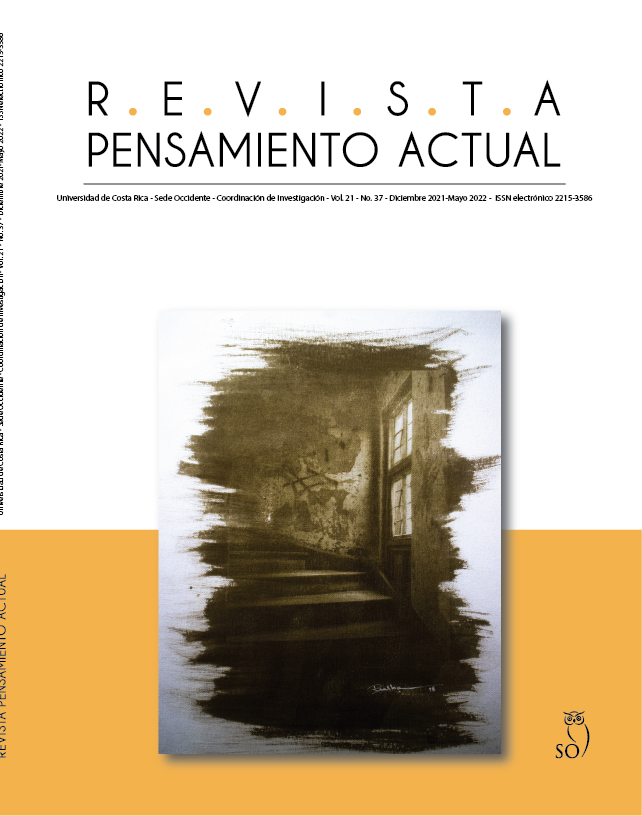Abstract
This article analyzes the different types of narrator that appear in Graciela Montes's narrative when addressing the subject of memory, both collective and individual. The analysis focuses on the following stories: A la sombra de la Inmensa Cuchara, Otroso, Uña de dragón y Aventuras y desventuras de Casiperro del Hambre. This analysis of the stories made it possible to demonstrate how the aforementioned stories tell a silenced past so that children and young people are aware of the history on which their present is articulated. Likewise, this study shows that one of the objectives of Graciela Montes is that her child readers always contrast the sources of information when elaborating the collective memory and in this way do not forget the terrible history of the last dictatorship Argentine civic-military. In addition, with the creation of unreliable narrators such as those used in the stories under study, the writer will ensure that the child reader does not accept a single truth as imposed by the omniscient narrator. The creation of unreliable narrators in children's literature is extremely important, since it requires the children's reader to participate in it, since they lead him to imagine the assumptions raised by the narrator. The analysis of the stories was based on narratology theorists: Genette, Chatman, Barthes, Booth, among others.
References
Booth, W. C. (1974). La retórica de la ficción. Barcelona: Bosch.
Chatman, S. (1990). Historia y discurso. Madrid: Taurus.
Díaz Rönner, M. A. (1997). Ejercicios de textualización: lo visible e invisible en la litera-tura infantil. Hoja de vida, Revista Latinoamericana de Literatura Infantil y Ju-venil, 5, 33-37.
___ (2001) Cara y cruz de la literatura infantil. Buenos Aires: Lugar Editorial.
García, L. R. (2015). Entre la memoria y la literatura: dos textos emblemáticos de la lite-ratura infantil argentina prohibidos durante la última dictadura. Anuario de in-vestigación en literatura infantil y juvenil. 13, 73-91.
Genette, G. (1989). Figuras III. Barcelona: Lumen.
Halbwachs, M. (2011). La memoria colectiva. Madrid: Miño y Dávila Editores.
Machado, A. M. (2015). Censura, arbitrio y sus circunstancias. Ocnos: Revista de Estu-dios sobre lectura, 14, 7-17 DOI:10.18239/ocnos_2015.14.01
Montes, G. (1991). Otroso (últimas noticias del mundo subterráneo). Madrid: Alfaguara.
___ (1993). A la sombra de la Inmensa Cuchara. Buenos Aires: Sudamericana.
___ (1996). El golpe y los chicos. Buenos Aires: Gramón-Colihue.
___ (1999). La frontera indómita. México D.F.: Fondo de Cultura Económica.
___ (2000). Uña de dragón. Una historia que son dos. Buenos Aires: Gramón-Colihue.
___ (2000). Aventuras y desventuras del Casiperro del Hambre. Buenos Aires: Colihue.
Ricoeur, P. (2010). La memoria, la historia, el olvido. Madrid: Trotta.
Soriano, M. (2005). La Literatura para niños y jóvenes. Guía de exploración de sus grandes temas. Buenos Aires: Colihue.
Valles, J. R. (2002). Diccionario de teoría de la narrativa. Salobreña: Editorial Alhulía.
Vicente, S. (2019). El folclore y la música en la narrativa de Graciela Montes, en C.
Sánchez, A. Sanz (Ed.), La voz de la memoria, nuevas aproximaciones al estudio de la Literatura Popular de Tradición Infantil (pp. 495-505). Cuenca, España: Edi-ciones de la Universidad de Castilla-La Mancha.
___ (2005). Temáticas y significados de Otroso en V. Ruzicka, C. Vázquez y L. Lo-renzo (Ed), Mundos en conflicto: representación de ideologías, enfrentamientos sociales y guerras en la literatura infantil y juvenil (pp. 439-451). Vigo, España: Servicio de publicaciones Universidad de Vigo.
Villanueva, D. (2006). El comentario del texto narrativo: cuento y novela. Madrid: Ma-renostrum.

